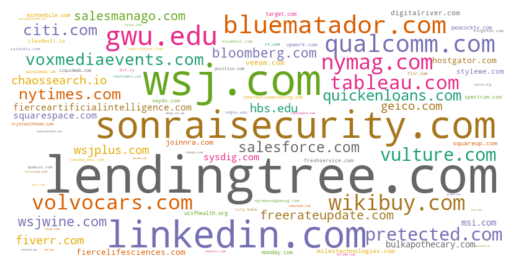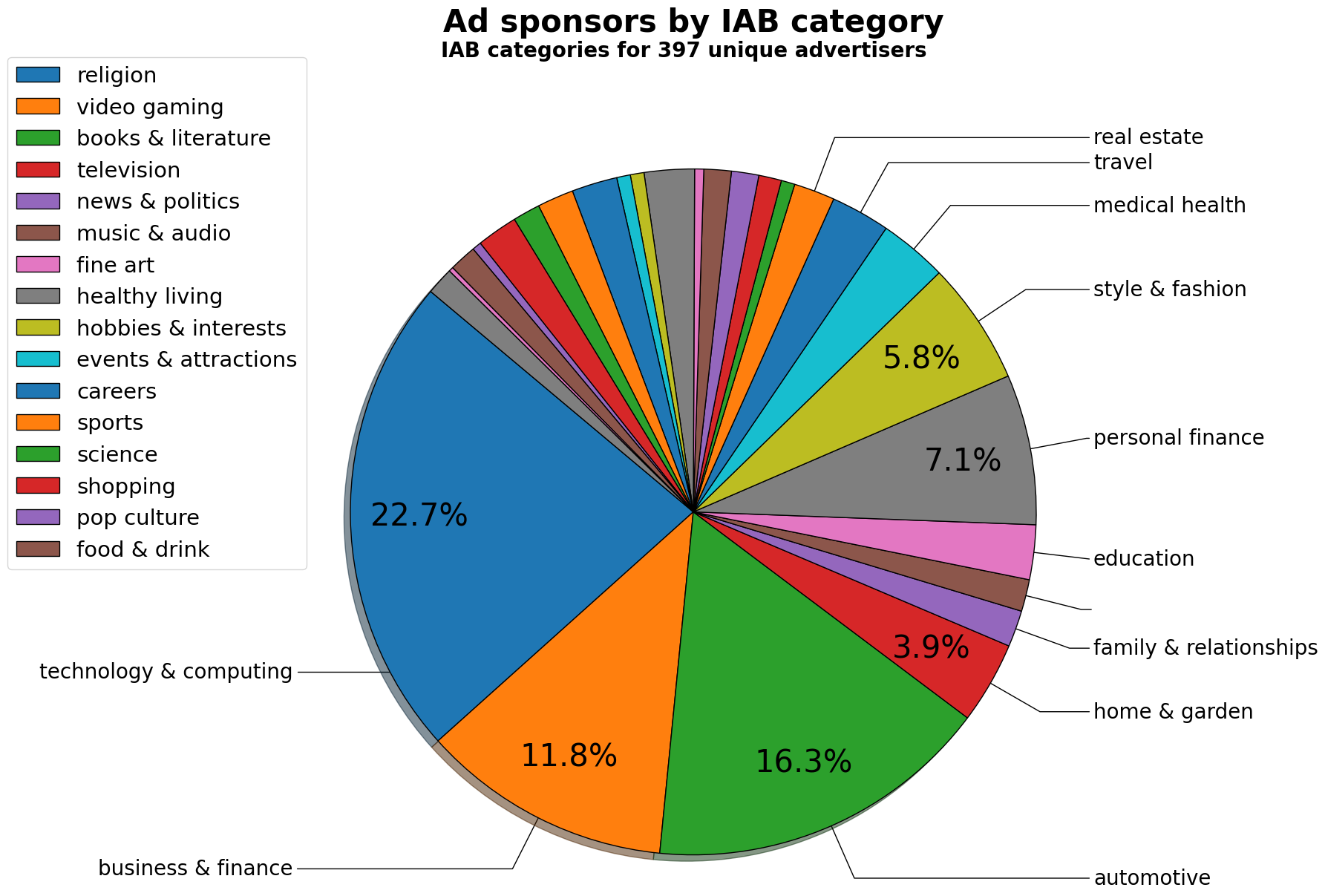From the moment we log onto the internet, we get bombarded with dozens, if not hundreds of digital ads. Ads for shoes, shirts, vacations, productivity tools, medicine, political campaigns, mortgages, even ads for next generation military helicopters, weapons conferences, “digital battlespace” management, and class action lawsuits.
A 2019 report found that the average internet user spends more than a quarter of their life (nearly seven hours per day) on the internet, through a combination of mobile, desktop, and other devices at work and at home. A typical user might see several dozen to several thousand web pages per day. Given how much time we spend staring at computer or smartphone screens, it is no surprise that advertisers devote much of their efforts to getting a piece of our attention through said screens.
So how many ads does a typical internet user see per day? Estimates vary greatly, with some clocking in at 20,000 per day. One might question what these companies are getting out of bombarding users with so many ads. After all, many psychology experiments have shown that our short-term memory can hold only a limited number of separate items. The average is about 7 items, plus or minus 2, depending on the context and individual. There is also the issue of relevance - more than half of online users find that the online ads they see are irrelevant. This has been partly attributed to problems with inaccurate audience targeting data.
I decided to conduct an exploratory experiment and monitor how many Google display and banner ads I saw over the course of a single month of browsing activity. I used the Adalytics browser extension to keep track of all my ad data to determine:
- How many different advertisers are paying for ads to get my attention?
- What types of ads do I see most often?
- What proportion of the ads I saw were relevant or useful to me?
How many different ads did I see?
Over the course of one month in 2020, I saw a total 4,975 ads across the 35 different websites I visited. Of these 4,975 ads, there were 397 unique advertisement sponsors.

How many times did I see an ad from a particular advertiser?
 Word cloud of advertisers whose ads I saw most frequently
Word cloud of advertisers whose ads I saw most frequentlyOne advertiser showed me their ads over 2,000 times within the course of one month
I was surprised by the large number of ads I got from the online lending marketplace LendingTree. Almost 40% of the ads I saw were from their company, for a grand total of 2,081 ads. Upon closer inspection, I realized that I had been reading an article on a statistics website and left the browser tab open for a day (but not in view). This particular website would unload and load new ads from Google and Pubmatic’s ad networks every 15-20 seconds - an ‘interesting’ practice that allows a publisher like the website displaying this LendingTree ad to garner a larger number of ad impressions (and revenue) per each site visit. This practice wastes a user’s network data and can also slow down browser performance.This situation illustrates a broader phenomenon - the AdChoices program was created partially in response to the US Federal Trade Commission (FTC) taking a closer look at the digital advertising industry in 2009. The resulting initiative was designed as a self-regulatory mechanism by the adtech platforms, but those platforms may have little financial interest in creating tools that enable users to reduce how many irrelevant ads they are shown. It is therefore unsurprising that eliminating irrelevant ads has become one of the top drivers of ad blocker adoption.
A recent r/Ad Operations discussion confirmed that LendingTree most likely is getting charged for this multitude of ‘unseen’ impressions. Advertisers can utilize frequency capping to reduce the number of times a website visitor is shown the same ad and blacklist websites that inflate their impression counts through such means.
Disregarding this one problematic website, LendingTree was still the dominant purveyor of ads to my browser - 162 distinct impression loads. I discussed in another blog post how the Digital Advertising Alliance (which includes Google) created a self-regulatory initiative called AdChoices, which in theory allows consumers to opt-out of seeing a specific ad multiple times by clicking on a blue triangle icon in the top right corner of an ad iframe. However, I showed in that exploratory analysis that a majority of ads do not include the AdChoices icon within their iframes, thus preventing users from opting out of seeing a specific ad unless they install an ad blocker. At the time this analysis was conducted, a majority of LendingTree’s ads that were observed neither included the AdChoices icon nor provided an opt-out mechanism upon clicking. In the latter case, the Blue AdChoices icon would simply take me to a Google Ads FAQ that talks about Google’s Ad Personalization. At the time this blog post was written, I noticed that some of LendingTree’s ad do include a seemingly functional AdChoices icon that lets you opt-out of seeing their ads - the only problem is, after clicking this button and navigating to a new page, I would still see the same Lending Tree ads. Therefore, there was no way for me to indicate that I was not interested in LendingTree’s ads for the 2000th time, short of tweeting at their Marketing Team. (I will update this blog post if we get a response.)
Breakdown of ads by category
I used the Interactive Advertising Bureau’s (IAB) Content Taxonomy to categorize each ad I was shown and see what types of ads were most common. Categorizing the 397 unique advertisements showed 27 different IAB categories represented in this sample. Of these, “Technology & Computing” ads were the most common, while “Shopping” and “Food & Drink” were surprisingly under-represented in terms of the number of distinct advertisers.
 Pie chart illustrating the relative frequency with which I saw different categories of ads. Technology, business, and automative ads dominated.
Pie chart illustrating the relative frequency with which I saw different categories of ads. Technology, business, and automative ads dominated.I also had a fair number of different “Automotive” related ads showing up, both for cars as well as car insurance. I would broadly consider this category to be irrelevant to me, as I do not own a car nor want to own one. Showing car insurance ads to someone without a car does not seem to match the aspirational marketing maxim of “right person at the right time.”
How many ads were relevant?
Lastly, I sat down and reviewed the different unique ads I saw and labeled them as ‘relevant/useful’ or ‘not relevant’. This was obviously a very subjective exercise but an important one nonetheless. Irrelevant ads hurt user’s digital experience and they waste advertisers’ time and money. Entire industries have been built on personal data collection and the promise of marketing personalization, so this exercise was meant to serve as a very rough proxy for the success of that vision.
When labeling ads as ‘relevant’, I tried to be fairly open minded and include things that I’m not in the market for right now, but might be at some point in the next few years, such as replacement running shoes. I also included public awareness ads, such as those for coronavirus.gov or the public health initiative alonetogether.com. Of the 397 unique advertisers whose ads I saw (including multiple different products or ad copies), I decided 32 of them were relevant. The majority of these were for technology services, such as the cloud software monitoring company sonraisecurity.com, news related items (like a Bloomberg subscription or Politico sponsored articles), or coupon services. I got several ads for products I already purchase, such as TDAmeritrade’s brokerage services or Cloud Guru’s online tech education service. However, ads for things like Convance’s contract clinical trial services, car insurance, coding bootcamps, or digital marketing for attorneys were not things I would ever need.
I saw these 32 ‘relevant’ ads a total of 666 times (auspicious, I know), and saw irrelevant ads 4,309 times. Excluding that one problematic website that served me thousands of LendingTree and other ads, reduces the irrelevant ads frequency total to 1867, or 74%.
Conclusion
Based on this small sample size analysis and accounting for the outlier of one website, I saw ~85 Google display ads per day. The majority of them (74%) were not relevant to me, and in most cases I did not have a way to opt-out of seeing them any more. I did get some ads from companies that were offering relevant products or services that I looked into further; some of these companies paid for more than 100 impressions to grab my attention, which underscores how some marketing strategies espouse a high number of touchpoints to interest a customer.
The example of LendingTree’s ad barrage, both on that one particularly problematic website, as well as on other sites, highlights how a lack of opt-out mechanisms and frequency capping can hurt consumers, and perhaps advertisers as well.
Take away points
- The proportion of ads shown to users that are relevant can be as low as 25%, probably even lower
- A small number of advertisers can account for a disproportionately large portion of ad content served to users
- Users are often not given any way to opt-out of irrelevant ads, excepting by installing ad blockers
